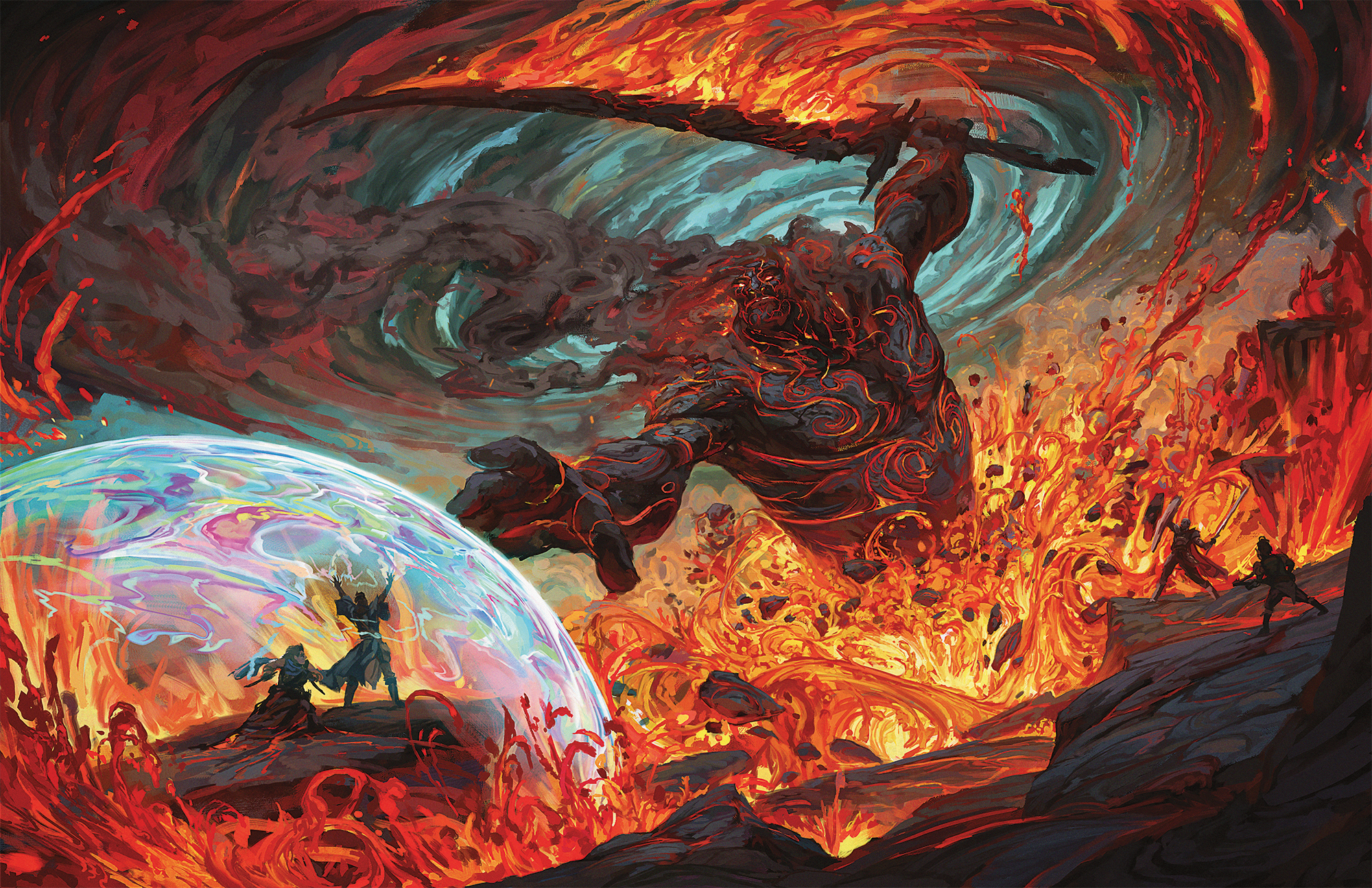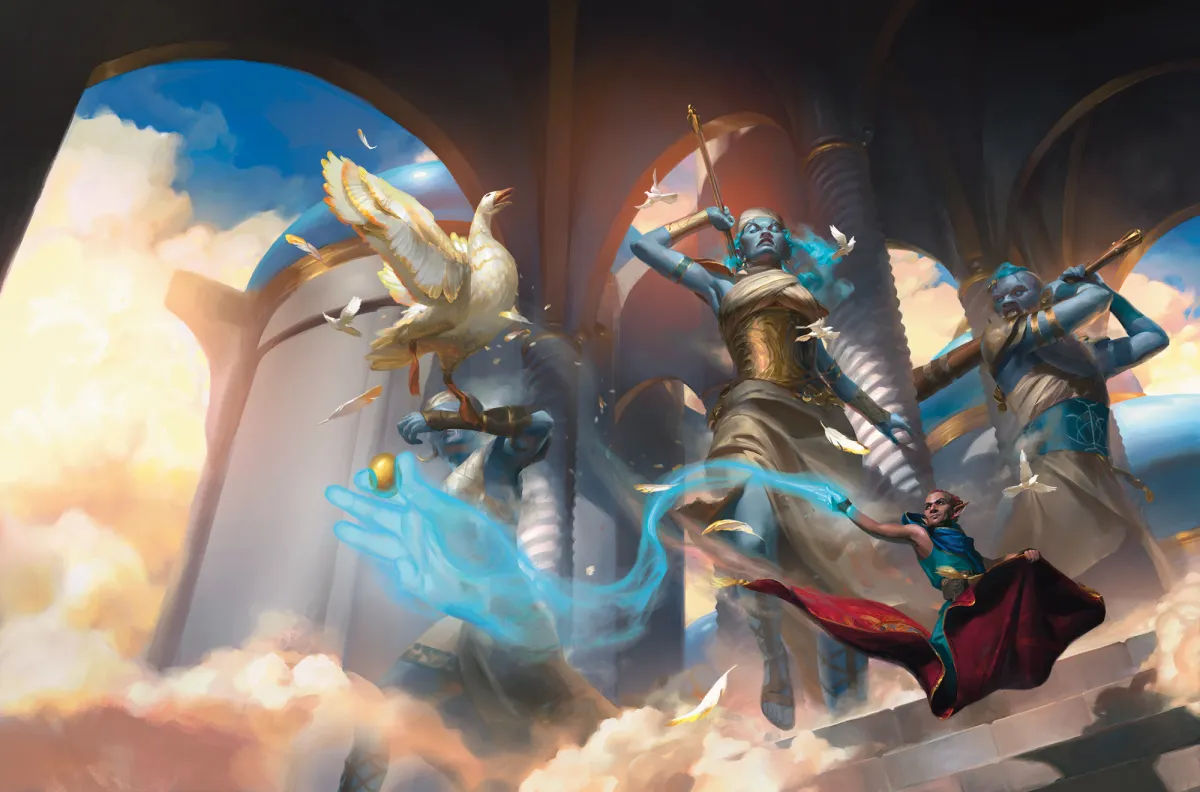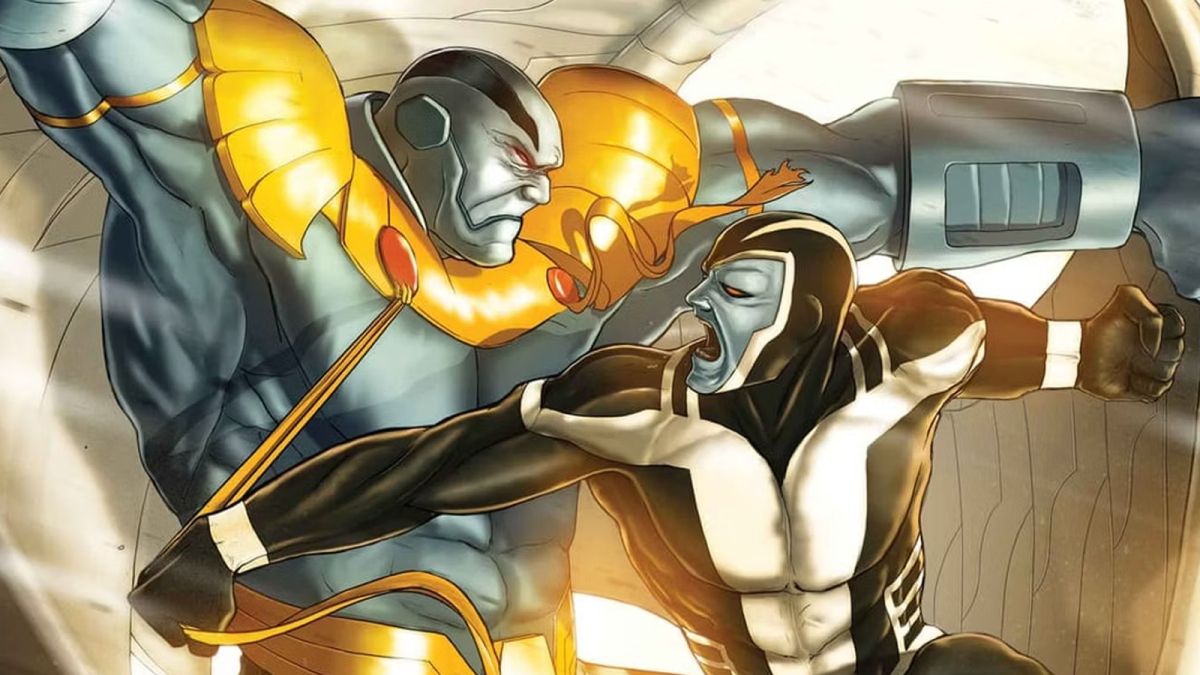In its ongoing role as a clearing house for every monster out of every available mythology, Dungeons & Dragons has always had a few kinds of giants on tap. The old faithful hill, stone, fire, frost, and storm giants go all the way back to the original 1974 “white box,” and have been reliable plug-and-play monsters for your home campaigns ever since. Over the next 5 decades, various books and editions have added more kinds of giants, but haven’t done much to broaden their overall role or make them more than an incidental threat.
In D&D lore, giants have rarely played a larger role than occasionally existing, usually on the higher end of the threat scale. Dragons, demons, and now mind flayers tend to suck up all the attention. Bigby Presents: Glory of the Giants, by Makenzie De Armas, Dan Dillion, Ben Petrisor, Jason Tondro, and James Wyatt, aims to address some of that. Out now, Glory of the Giants is a first-party sourcebook for D&D from Wizards of the Coast, with 192 pages of new lore, statistics, gear, and ideas for putting both old and new kinds of giants front-and-center in your new campaign.
I’ll admit that my first reaction was to wonder who’d asked for this, but Glory of the Giants has some charm. It’s one of those D&D sourcebooks that exists to answer questions that you didn’t know you had, like how giants are able to support themselves at all in an ecology that’s generally built around human scale. More specifically, this is another book in the ongoing effort by Wizards of the Coast to codify D&D’s various worlds into an overarching multiverse.
In Glory of the Giants, giants aren’t simply those big idiots who lurk in the hills or mountains; they’re the mortal descendants of an ancient, nearly forgotten god. The resulting implication ends up making D&D’s giants both sympathetic and a little scary. Glory of the Giants paints a picture of giants as a sort of failed divine first draft, who fell so far short of their creator’s intentions for them that he retreated into seclusion and has yet to reappear.
It’s not weird for any culture in D&D to be the fallen remnant of something greater, but the giants are depicted as what amounts to a failed first draft. It’s a hell of a hook for a campaign, with thousands of years of history and mythology for a party to explore, and an easy motivation for any antagonist. Giants are the grandchildren of a creator god, with monstrous powers all their own, so all it could take for a continent-spanning war is for one giant to decide it’s about time that people took him seriously.

Art by Wizards of the Coast
Glory of the Giants is the sort of sourcebook that’s all about providing a pile of plug-and-play elements that you can drop into any campaign, on any world. It’s got a couple of new backgrounds, one new barbarian sub-class, and a chapter on some giant-themed magical items, but the part I’m probably going to get the most use out of is the chapter on Enclaves. These are simple, mapped-out villages you can drop into any campaign, as handy ruins to explore, adventure hooks, or just some fantasy flavor the party can run into along the way from point A to B. I’m particularly fond of the bit where a giant child is looking for help to find his pet, Fluffy the allosaurus. It’s got a certain Saturday-morning cartoon vibe that I appreciate, as does the entry in the bestiary about the giant-sized goose.
As a result, though, this is the latest entry in Wizards’ tradition of first-party D&D sourcebooks that are just a big pile of stuff. It’s something that you, as a Dungeon Master, can pick off the shelf and flip through in search of giant-themed inspiration, with a ton of suggestions and ideas rather than hard rules or in-universe facts.
The strongest part of the book comes early on, with the aforementioned stories of giants’ creation and divine lore, but even then, the authors are careful to say that the whole thing is millennia-old mythology that could be entirely false. I would’ve been more interested if the book had been more definitive, rather than less, particularly with the potential power of its central hook. You don’t start from the premise that giants as a race are a god’s mistake and then try to go neutral with it.
As a way to put some respect back on giants, though, Glory of the Giants succeeds at what it’s trying to do. I might’ve preferred a more specific, focused run at the giants’ new mythology, with more specific details and fewer blank slates, but Glory is a decent attempt to rehabilitate one of D&D’s classic workaday monsters. If you’re looking for something to oppose a high-level party, or some go-to monsters for a Norse-flavored campaign, or just want to run a game where all your players are stuck in some giant’s enormous living room, it’s not a bad pickup.
(Wizards of the Coast provided both a physical and digital edition of Glory of the Giants for the purpose of this review.)
KEEP READING: Honor Among Thieves Is an Ode to Improv Within Dungeons & Dragons





